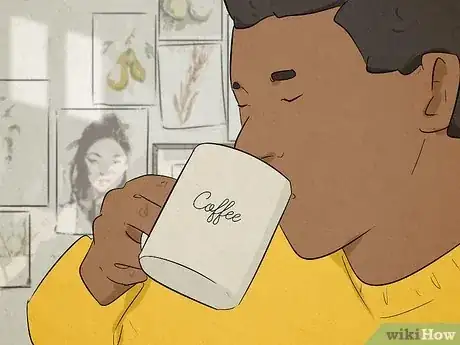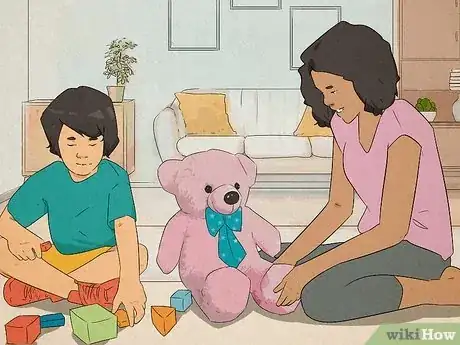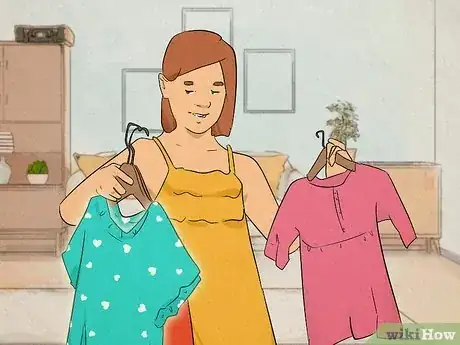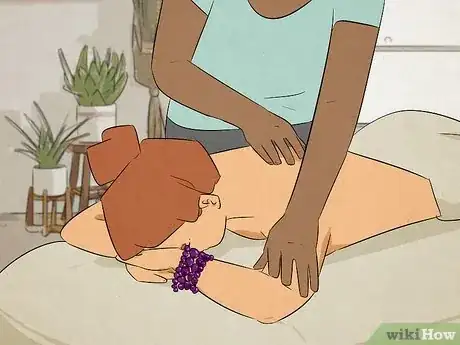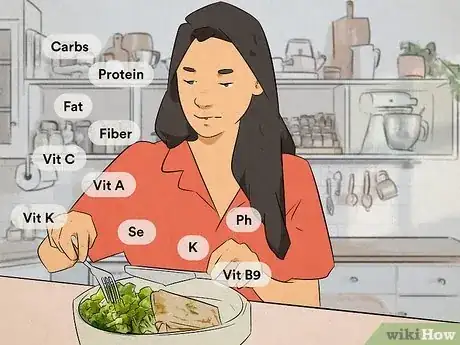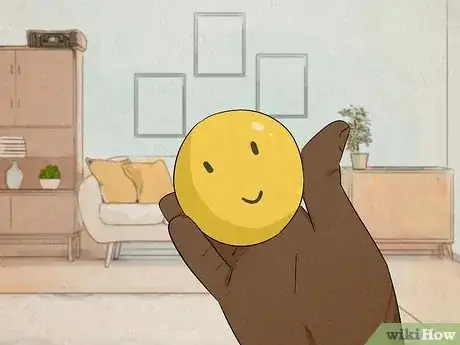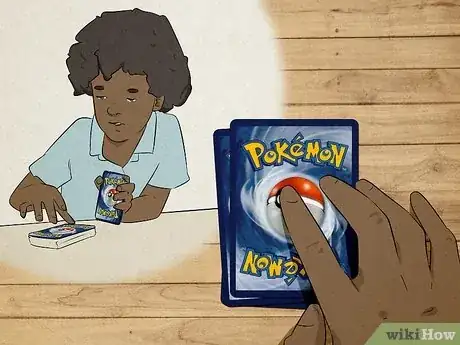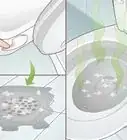This article was co-authored by Joseph Phillips and by wikiHow staff writer, Janice Tieperman. Joseph Phillips, MSW is a Clinical Therapist and Social Worker at Transformative Growth Counseling, which is based in Illinois and Florida. He specializes in relationship and attachment therapy and treats anxiety, depression, trauma, and substance use. He earned a Master of Social Work from Tulane University in New Orleans, Louisiana, and he completed his clinical internship with Transformative Growth Counseling. Joseph is also certified in disaster and collective trauma counseling.
There are 11 references cited in this article, which can be found at the bottom of the page.
What do the scent of a candle, a cozy sweater, and a cat-shaped coffee mug all have in common? To some people, all of these items could trigger specific feelings like happiness, comfort, and relaxation. We all make emotional associations with inanimate items without realizing it, but it’s totally possible to forge these connections intentionally, too. Read on to take a psychological deep dive into an emotional attachment to objects—and learn how to add a little more depth and emotional weight to your daily life in the process.
Things You Should Know
- Use your senses to attribute specific emotions to specific items. For example, you might associate lavender soap with relaxation after taking a soothing bath with it.
- View an item in a more positive context to change the existing feeling that you associate with it.
- Personify objects with human pronouns (he/she/they) to create a deeper connection with certain items.
- Add emotional motivators (like a desire for independence) to your marketing campaigns to build a stronger emotional connection with customers.
Steps
Overview
-
1Everyone creates emotional connections with objects. It’s totally normal and natural for our brains to make emotional connections with different inanimate objects we use a lot; in fact, our brains often do this subconsciously. These items don’t necessarily have to be vacation souvenirs or childhood toys—our brains make powerful emotional associations with a variety of different objects.
- Your favorite coffee mug might fill you with a sense of contentment and happiness, while the sight of your favorite armchair might make you feel relaxed and chilled out.
-
2Emotional associations with objects are rooted in memories. In many cases, our brains make connections between items and the primary emotions we felt while using them. Take a sweater, for instance—if you feel warm, safe, and secure whenever you wear your favorite sweater, your brain starts associating that sweater with the memories of those emotions.[1] X Research source
- Maybe you get a warm and fuzzy feeling when you stumble across your favorite childhood toy, or you feel excited and festive whenever you see cookie dough at the grocery store. Those feelings might be linked to spending long hours playing with your favorite LEGO set, or many seasons of making cookies with your family around the holidays.
- A person’s sense of smell is also connected with memory, which is why specific smells often remind you of certain memories and experiences.[2] X Research source
- When dealing with trauma, there are triggers associated with it, and these triggers can be objects, as well as smells or sounds.
Advertisement -
3Creating emotional connections with objects can be positive or negative. As young children, we often build strong emotional links with “transitional objects” (like a toy or blanket) that help us develop a sense of emotional independence.[3] X Research source Even as adults, these items can offer a great sense of warmth and safety.[4] X Research source While these associations can be very positive and comforting, they can potentially lead to issues like serious stress or hoarding if left unchecked.
- Items can also carry a lot of emotional weight if they were given to you by a loved one. For example, the sight of your childhood Barbie might fill you with comfort and happiness because your mom gave it to you as a birthday gift many years ago.
How to Create Emotional Associations to Objects
-
1Assign meaning and emotion to an item using a visualization routine. Choose an emotion you’d like to feel (relaxed), as well as item you’ve like to associate with that feeling (a mug). Then, create a routine that revolves around that emotion (making yourself a tea as you relax and unwind after a long day). Infuse that feeling into as many aspects of the routine/process as possible (like the way the mug looks and the way the tea smells) to really bring the emotional experience to life.[5] X Research source
- It may help to use an item that you already associate with a specific emotion. For example, your favorite blouse probably gives you a lot of good vibes to begin with—so, it would be a great object to associate with happiness or contentment.
-
2Bring the item along when you know you’ll experience a specific emotion. Maybe you’re about to embark on a life-changing roadtrip, or you’re about to enjoy a relaxing spa day. Take a specific item with you on that journey and let the experience create an emotional attachment.
- Installing a fun hood ornament right before a roadtrip could infuse that item with a sense of excitement and adventure
- Wearing a necklace or bracelet to a spa might give that item a sense of relaxation and peace
-
3Surround the object with a positive context. Sometimes, we already have specific feelings associated with objects—but that doesn’t mean those associations have to be permanent! Our brains are always taking part in neuroplasticity, or the process of changing and adjusting over time.[6] X Research source Because of neuroplasticity, we can reprogram our minds to associate objects with new emotions and experiences.
- Let’s say you always hated broccoli as a kid—whenever you’d see the green stuff on your plate, you’d feel disappointed and let down. You might reprogram that feeling by associating broccoli with a feeling of optimism and happiness for all the tasty nutrients and benefits it offers your body.
-
4Make emotional connections with items that have round or balanced shapes. Research shows that symmetrical and/or curved items make people feel good, while items with sharp edges and unbalanced shapes make people feel unhappy or tense. Make things a little easier for yourself by grabbing an item that’s naturally curved and/or well-proportioned (like a stress ball or a blanket)—you might have an easier time building a positive emotional connection with it.[7] X Research source
- Think about how the object was made, too. Handmade items and gifts likely carry more emotional significance than machine-made items.
-
5Imbue the item with luck or a positive superstition. Whether “good luck” and “bad luck” truly exist is subjective—but there’s no denying the power of belief. If you believe that a rabbit’s foot, piece of jewelry, or other trinket is truly “lucky” and use that belief that pursue new adventures and opportunities, then your item is “lucky” in its own way.[8] X Research source
- Let’s say you wear a special hair clip to a job interview with the hope that it’ll bring you “good luck.” Even though it’s your experience and qualifications that land you the job, you might associate that hair clip with luck after that positive experience.
-
6Personify an object to create a sense of connection. Personification is all about giving lifelike qualities to inanimate objects—and according to some research, it can actually help you feel a little less lonely and a little more connected in your day-to-day life. A simple but effective way to personify objects involves referring to them with pronouns like he, she, or they.[9] X Research source
- You might say “Sorry about my computer; she’s having a rough day!” when you take a long time to load into an online meeting.
- You could say “My car hates the cold weather—he takes so long to start up” after driving to work in the winter.
-
7Build a collection of items that already have strong emotional associations. Maybe you have a bunch of Pokemon cards that remind you of nostalgic childhood memories, or you collect a variety of tea cups that help you feel relaxed and laid-back. Establishing a collection of significant items that are filled with positive emotions could be a valuable source of comfort or relief during a rough day.
- After a bad day at work, you might find a peaceful sense of escape while flipping through your binders of old Pokemon cards.
- After a day filled with nonstop errands, admiring your favorite teacups might help you feel a little more relaxed.
How do you create an emotional connection in marketing?
-
Use emotional motivators to connect your customer with what you’re selling. Studies show that businesses make more money when they have a stronger emotional connection with their customer base. Take this bank, for instance—when they took extra steps to emotionally connect with their young adult customers while marketing a new credit card, their total number of new credit card accounts increased by over 35%. Here are just a few emotional motivators that can help take your marketing or advertising campaign to the next level:
- Cater to a person’s desire to feel unique and separate from other people
- Create a positive, uplifting, and hopeful vision for the future
- Invoke a sense of complete independence and freedom
- Reflect a desire to save the earth and care for the environment[10] X Trustworthy Source Harvard Business Review Online and print journal covering topics related to business management practices Go to source
- Tip: Emotional marketing techniques can emotionally charge and elevate your ads. Try using an inspiring tale or celebrity to motivate a customer to buy an item (like featuring a famous athlete on a box of cereal), or highlighting a customer’s goals and connecting those dreams with a specific item (like catering high-end jewelry to a person who wants to appear wealthy and successful).[11] X Research source
Potential Problems
-
Emotional associations with objects can lead to hoarding issues. People with a hoarding disorder have difficulty throwing items out because they have some many emotions and memories tied to different objects.[12] X Research source This often leads to mental struggles like indecisiveness, stress, and procrastination as well as physical problems like severe clutter. Hoarding is closely linked with mental health challenges like Obsessive-Compulsive Disorder (OCD), so talk to a mental health professional if you’re worried about being at risk.[13] X Trustworthy Source Cleveland Clinic Educational website from one of the world's leading hospitals Go to source
- If you are dealing with a hoarding disorder, a psychologist might suggest treatment options like Cognitive Behavioral Therapy (CBT), where you can learn how to have a healthier relationship with the items in your life.
Other wikiHows

 How to Relieve & Prevent Headaches & Migraines Fast
How to Relieve & Prevent Headaches & Migraines Fast
 Best Ways to Unclog a Toilet
Best Ways to Unclog a Toilet

 How to Take a Screenshot on a Windows PC: 8 Simple Tricks
How to Take a Screenshot on a Windows PC: 8 Simple Tricks

 How to Take Care of Potted Orchids
How to Take Care of Potted Orchids

Expert Interview
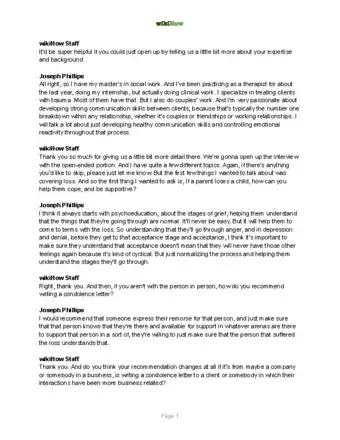
Thanks for reading our article! If you'd like to learn more about attachment theory, check out our in-depth interview with Joseph Phillips.
References
- ↑ https://www.sheknows.com/health-and-wellness/articles/1142070/why-objects-make-us-happy/
- ↑ https://www.scientificamerican.com/article/why-do-smells-trigger-memories1/
- ↑ https://www.healthychildren.org/English/ages-stages/baby/Pages/Transitional-Objects.aspx
- ↑ https://www.tandfonline.com/doi/full/10.1080/1751696X.2018.1433355
- ↑ https://bridgetwebber.medium.com/the-magic-of-linking-objects-with-emotions-6db6b8517fd7
- ↑ https://centerhealthyminds.org/feature/neuroplasticity
- ↑ https://www.sheknows.com/health-and-wellness/articles/1142070/why-objects-make-us-happy/
- ↑ https://bridgetwebber.medium.com/the-magic-of-linking-objects-with-emotions-6db6b8517fd7
- ↑ https://daily.jstor.org/personification-is-your-friend-the-amazing-life-of-letters/
- ↑ https://hbr.org/2015/11/the-new-science-of-customer-emotions
- ↑ https://www.entrepreneur.com/growing-a-business/5-ways-to-get-to-the-heart-of-emotional-marketing/297367
- ↑ https://www.sciencedirect.com/science/article/pii/S0010440X20300213
- ↑ https://my.clevelandclinic.org/health/diseases/17682-hoarding-disorder
About This Article

